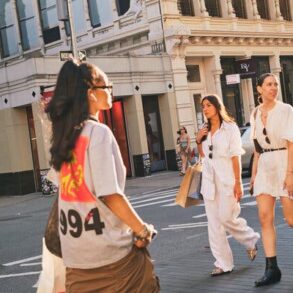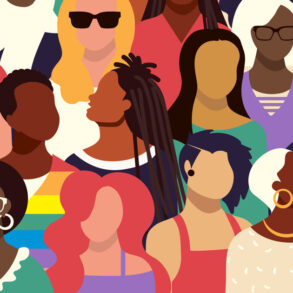COLUMBIA — Collecting vintage clothes used to be an introverted hobby.
You could leisurely browse the racks at Goodwill and other thrift stores and find untouched gems — ’70s rock band merch, Budweiser t-shirts, Harley-Davidson jackets.
But what used to be a simple hobby largely relegated to young people shopping for themselves or reselling to their friends has turned into a $211 billion industry worldwide. The saturated market has forced vintage retailers to get more creative in their endless pursuit for old clothes: exploring dusty attics, rat-poop-infested back rooms and even abandoned houses.
Online vintage retailing, brick-and-mortar stores and pop-ups are booming, including in Columbia, where in the last year, multiple vintage brick-and-mortar shops have opened their doors.
“It has become a little bit cutthroat,” said Savannah Inglesby in a phone interview. The Greenville resident and vintage retailer travels the Southeast selling biker and Western apparel. “It’s a little bit harder to find clothes,” she said.
Every Monday morning, vintage collectors and secondhand resellers line up at the Goodwill clearance center on Sunset Boulevard in West Columbia to sift through large bins of clothes.
“There’ll be a huge line outside the store for an hour beforehand,” said Candace Sharpe, a vintage seller for two decades who just opened her own store on Pendleton Street in Columbia. “The competition is fierce.”
Vintage boom
The secondhand apparel and accessory market is expected to double by 2026 and reach $82 billion in the U.S., according to a report by Global Data.
According to retailers, the increase in popularity really took off around the time of the COVID-19 pandemic, as many people looked for side jobs to make ends meet.
The growing environmental impact of the fashion industry is also a factor. Secondhand clothing stands in opposition to what’s commonly referred to as fast fashion, the mass production of low cost clothes that are typically discarded after a few wears.
The short life cycle and production methods in turn lead to a large carbon footprint and excess waste. Younger people are increasingly aware of this and choosing secondhand clothes that were made to last, said Alex Smith, one of the owners of vintage retailer Throwback Outpost on Beltline Boulevard.
And although vintage is still predominantly popular among Gen Z and millennials, others are getting involved, too.
“We’ve had people in their 60s and 70s buy clothes for themselves, like women who were very excited to find something that’s similar to something they used to own,” said Katie Roberts, the owner of Pannerpete on Harden Street in Columbia.
Old clothes, new strategies
The saturated vintage market has forced retailers to get creative. The Goodwill bins can have great finds, but they can also be huge wastes of time and energy, Sharpe said.
Estate sales, closing businesses and most importantly, word of mouth, can be more effective and consistent ways to keep a full inventory and find what some retailers refer to as “grails” — rare finds that people will pay hundreds of dollars for.
“I have stopped to talk to people on the side of the road,” Sharpe said. “It’s a lot of talking to people and telling them what I do and what I’m looking for. And they’ll be like, ‘Well, I have so much stuff in my attic’ or ‘My mom passed away and I haven’t dealt with all this stuff.’”
Sharpe once combed through crusty boxes of a closing gift shop that had kept their stock from the ’90s. “There’s rat poop everywhere — it’s a gross job, to be honest,” she said.
What time isn’t spent collecting the old garments is often spent cleaning them. Sharpe can get 60 years worth of cigarette smoke out of a piece of clothing, she said.
There is also the option of outsourcing the dirty work of the job to someone else and then buying from them, like a wholesaler, though this does lead to higher prices.
Roberts collects most of the garments that can be found in Pannerpete. But she also buys some from a friend who lives outside Atlanta, who gets permission to search abandoned houses for old clothes, Roberts said.
Stores like Throwback Outpost rely on a buy-sell-trade system. People come into the store and sell them items for cash or store credit. What isn’t acquired through them is bought from a wholesaler to keep a steady inventory of clothes, records and antiques.
When it comes to pricing the merchandise, the time and effort to find the garments, the rarity of the item, what the collector paid for it and whatever repair and cleaning was required are all factored into the price.
Of course, owners have to consider their customer base, too. For Columbia residents interested in clothing from past decades, relatively lower demand in the area means generally lower prices. When you’re predominantly selling to college students, as Sharpe does, keeping price points low is a must.
“In Nashville, I would sell that for $200,” Sharpe says, pointing to a ’70s embroidered bell-bottom jacket marked for $75.
While Columbia’s vintage scene is in its infancy, Charleston has had multiple brick-and-mortar stores and a lively flea market, Eight Four Flea, where dozens of sellers gather to sell vintage items.
“The growth is definitely here, and I think it’s here to stay,” Smith said of Columbia.







